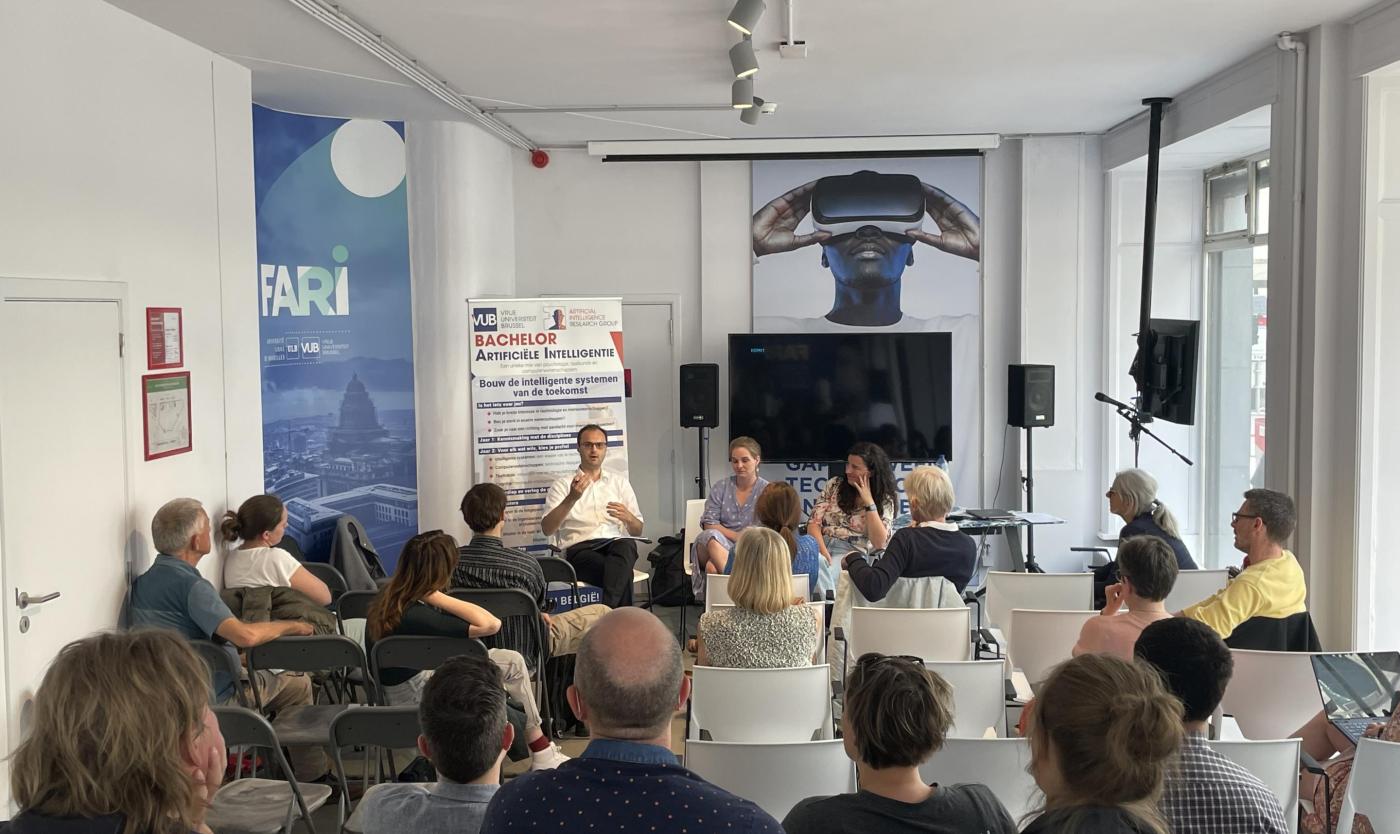
AI is no longer science fiction. It’s already in our lessons, our tests, our classrooms. On 4 June, the VUB brought together around thirty teachers and teacher trainers for an afternoon of critical reflection and eye-opening insights on generative AI in education. No techno-optimism. No doomsday panic. Just nuance, curiosity, and a healthy dose of human common sense.
“Pupils use generative AI every day. They’ve got the app right there on their phones,” says Marjon Blondeel from the VUB Artificial Intelligence Lab. “But do we, as teachers, know enough to guide them?” That’s exactly why VUB organised this seminar specifically for teachers. Not to hand out ready-made answers, but to explore—together—what’s really happening in the classroom.
Understanding AI is the first step to keeping it in check
Professor Paul Van Eecke kicked off with a look under the bonnet of ChatGPT. No magic tricks—just a clear explanation of what these tools can and can’t do. Because if we’re serious about debating AI in the classroom, we first need to understand how it works. Or rather: why it often doesn’t do what we expect.
Good teaching is not a prompt
Educational researcher and former teacher Marijke Van Vlasselaer followed with a sharp, philosophical talk. Her starting point: what still counts as good teaching, when knowledge—and even skills—seem to fit into an app?
She outlined four student mindsets: the ‘passenger’ who goes along without really engaging, the ‘achiever’ who’s focused on grades, the ‘resistor’ who turns away, and the ‘explorer’ who learns out of genuine curiosity. And that last group, she warned, is becoming increasingly rare. According to Van Vlasselaer, the mix of ‘passenger mode’ and generative AI is a dangerous one. “If an app gives you the answer, why would you bother thinking for yourself?” Her message: don’t panic, but do dare to reinvent education. Use a humanist lens—and don’t stress if you’re still figuring out how to use AI. No need for FOMO.
AI also speaks maths
Mathematician Ann Dooms brought words and numbers together. Her talk on ‘the digi-language’ made it clear: AI runs on maths. It’s mathematical models that allow machines to predict language and make sentences sound human. She showed how this knowledge can help us understand AI better—and how it can be useful in every subject. She also touched a nerve: AI tends to generalise. And that’s exactly what pupils should learn to challenge.

What teachers really think
During the Q&A and reception, we spoke with a few attendees. Computer science lecturer Annick said: “I’m here because I’m still figuring out how to integrate AI into my lessons. Today really showed how important it is to build a solid understanding first. Critical thinking starts with knowing what you’re thinking about.”
Maths teacher Tania was struck by the AI-maths connection: “I had no idea you could bring AI into a lesson like that.”
Ethics teacher Jelle added: “Even the experts still have questions about AI. That’s actually reassuring. What matters is that we keep teaching young people to think, to write, to understand. That’s still the core of it all.”
One important legal point also came up in the discussion: you’re not allowed to upload class lists or grade sheets into ChatGPT or similar tools. That’s a clear rule under European GDPR law. These tools process data via external servers, and without explicit consent or a data processing agreement, it’s simply not allowed. Something that might seem useful in the classroom could actually breach privacy regulations. In short: don’t paste that spreadsheet into a chatbot.
What now?
AI won’t be leaving the classroom. But it shouldn’t replace the teacher. Or the student. What we need now is space to experiment—without fear. And the courage to say: “AI is welcome in the classroom, but we set the rules.” Or as Van Vlasselaer put it: “AI is a word predictor. Not a thinker. So let’s keep thinking.”
*This is a machine translation. We apologise for any inaccuracies.